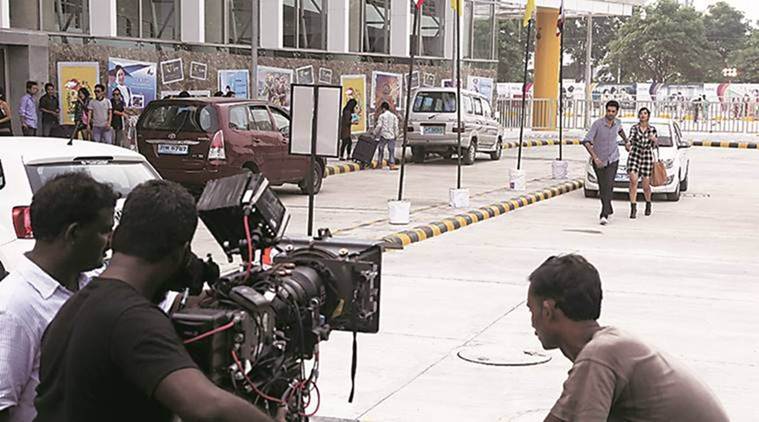 It’s not cinema alone. Since December 2012, the gangraped, violated woman has been dragged to the centre of Indian politics but the hindsight of 2020 should tell us one thing. (File Photo/Representational)
It’s not cinema alone. Since December 2012, the gangraped, violated woman has been dragged to the centre of Indian politics but the hindsight of 2020 should tell us one thing. (File Photo/Representational)
Right at the start of Paatal Lok, the web series that is the current toast of the internet, the viewer is dropped into the PCR van of a down-and-out cop from Outer Jamna Paar police station — and thus begins our descent into the underbelly of the metropolis. But excuse my deja vu, haven’t we been here before, in these same murky depths?
There was a time in the 1980s and 1990s, when Hindi cinema mostly told stories set in Nowhere, about characters who came from a recognisable (north Indian, Hindu, upper-caste) milieu, but whose backstories had no imprint of the mohallas they came from or the cuss words they could let loose. Then, a pack of writers and filmmakers, many of them from the northern heartland, began to tell stories as much of places as of people, who took us into their small towns and villages, uncovered the city’s secrets and hellholes. They were raw, masculine worlds, scrubbed of varnish and veneer, of women’s talk and domestic spaces.
But close to two decades since Black Friday (2007) and Omkara (2006), the disruption is the dreary formula. If it is “edgy”, it has to be about the Badlands — a much-trodden path that leads mostly to a feudal snakepit of a village in Uttar Pradesh, where scruffy men cannot seem to finish one sentence without spitting out expletives. The formula stems from a consensus that the best art is a punch in the gut — or a hammer to the head. The ideal viewer must sit back and accept the “harsh truth” (of caste poison, violence, rape), helpfully uncovered by the well-meaning male filmmaker and writer, without flinching.
I flinched. Not only at being shoved into another Badland, but even more at the gratuitous violence of Paatal Lok, at its blase, repeated dehumanisation of the vulnerable. Seldom has a character been battered by writers as much as Cheeni, a transwoman from the Northeast who gets caught up in the sinister plot of this police procedural. Almost every time she appears on screen, a predatory gaze follows her and makes good its promise. She sobs in terrifying helplessness; she is stripped and thrashed, rinse and repeat. Even her back story is unsparing: She is abandoned as a child and then raped — a scene that stands out for its casual heartlessness.
There is more — the viewer watches the mother of a lower-caste rebel in a Punjab village sob, her dupatta stuffed into her mouth, as she is gangraped to punish her son. In another village, paid rapists bargain about the many kinds of violations possible on women, from chhota to bada to pura. All slickly shot visuals that reinforce — again and again — the immense, brutal power on one side, and abject victimhood on the other.
This is not the first series/film with a political voice and intent to include this casual brutalisation of women — from Sacred Games to Mirzapur to Gangs of Wasseypur. But Paatal Lok gets extra points for how summarily women’s violations are used to propel its important characters (all male); the rape of his sisters even used to “humanise” one of the show’s most violent characters. The women are battered pawns, but the writers remain touchingly invested in the suffering and salvation of middling and mostly insufferable men.
Paatal Lok review: An intelligently written, engrossing series
You might ask: “But isn’t this brutal violence the truth of India?” The violence against women, minorities and people of “lower castes” in India is an undeniable reality. But cinematic storytelling does not simplistically mirror reality, it is shaped by hard-nosed commercial calculations. It reflects the storyteller and her politics. Given that web series after series is eager to out-cuss the other at this adolescent exposure of “real India”, given that writers cannot seem to disguise their slack-jawed awe of laconic men capable of great gore, it is logical to conclude that even if the multiplex is giving way to streaming websites, the ecosystem of writers and producers remains the chummy boys’ club it was. “Edgy” crime and darkly unfunny noir sell, like action movies and musicals did. Just that the bonus package with the former is a whole lot of self-righteousness.
It’s not cinema alone. Since December 2012, the gangraped, violated woman has been dragged to the centre of Indian politics but the hindsight of 2020 should tell us one thing. Violence against women in this country is “exposed” and consumed as spectacle, rhetoric and narrative — to further all kinds of male agendas. The #MeToo exposes were an illustration of how men use precisely the rhetoric of feminism and equality to carry on their aggressions. In 2012, women had turned out on the streets in rage and anguish to demand azaadi from a patriarchal state-family nexus. What they got instead was a raft of death penalty laws; or, as in Hyderabad a few months ago, instant mob justice.
A question, then, for the well-meaning liberal men, who inevitably helm “hard-hitting political” shows that make the right noises about “critiquing” patriarchy: How long will this aesthetic pretend to counter a “history of violence” when it is so enmeshed in violence, and so much in awe of the angst of men?
When will you stop encashing reward points for progressiveness when your “realism” only knows how to turn women into showcase victims? When will you grow up and stop wanting to be our saviours?
This article first appeared in the print edition on June 12, 2020 under the title ‘Journey to same old badlands’. Write to the author at amrita.dutta@expressindia.com.